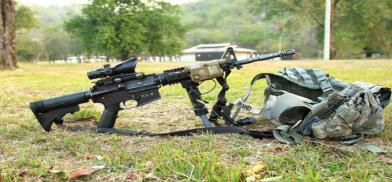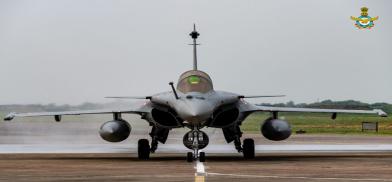India is on track to acquire the S-400 missile defence system, while it examines the US decision to impose sanctions on NATO ally Turkey’s defence industry over the purchase of the Russian system. Persons familiar with the dynamics of India’s global outreach told ET that since New Delhi maintains autonomy in its foreign policy, the US decision won’t affect the Indian deal. Last week, the external affairs ministry had emphasised that it pursued foreign policy based on national interest and hoped that this was appreciated by partners. “Our relations with Russia stand on their own merits, including in the sphere of military-technical cooperation,” MEA spokesperson had said.Diplomatic sources indicated that India’s case is different from that of Turkey as Ankara went ahead with the purchase of S-400 system despite being a NATO member. The MEA had earlier made it clear that India had no plans to scrap its S-400 deal with Russia despite the US nudge. The Ministry of Defence had also expressed similar views. The Indian government has not been comfortable with repeated US attempts to dissuade it from purchasing the S-400 system. Moreover, India has often taken a strong stand against the use of sanctions as a political tool by one country against the other. In fact, after the June 15 clash with the Chinese PLA on LAC in eastern Ladakh, which resulted in the killing of about 20 Indian military personnel, India had requested Russia to expedite S-400 supply, following which Moscow assured that some systems would reach much before the deadline of 2021-end. /// economictimes Source: Defenseblog-njs.blogspot.com
India on track to acquire Russian S-400 missile defence system
India approves procurement of 72,000 assault rifles from US

India's Defence Ministry has approved a proposal to purchase 72,000 Sig Sauer assault rifles from the United States at a cost of around Rs 780 crore.
The Defence Acquisition Council led by Defence Minister Rajnath Singh on Monday approved proposals for capital acquisition of various equipment required by the Indian armed forces at an approximate cost of Rs 2,290 crore.
These include procurement from the domestic industry as well as foreign vendors.
To equip the frontline troops of the Army, the council has accorded approval for the procurement of 72,000 Sig Sauer assault rifles at a cost of around Rs 780 crore.
Under the 'Buy Indian' category, the council has approved the procurement of Static HF Tans-receiver sets and smart anti-airfield weapons. The HF radio sets will enable seamless communication for the field units of the Army and the Air Force. They are being procured at a cost of Rs 540 crore.
The smart anti-airfield weapons being procured at cost of Rs 970 crore will add to the firepower of the Navy and the Air Force.
Earlier, the Indian Army had received the first lot of Sig Sauer assault rifles to boost its counter-terrorism operations. India had acquired the rifles under the fast-track procurement programme.
The new rifles will replace the existing Indian small arms system (Insas) 5.56x45 mm rifles used by the forces and manufactured locally by the Ordnance Factories Board. (IANS), Source: https://southasiamonitor.org
Rafale fleet will be a game-changer for India

On 29 July 2020, India received the delivery of the much-awaited French fighter jets – Dassault Rafale. The first batch of five jets out of the 36 fighter jets arrived in Ambala marking a historic procurement by the Indian defence ministry. The fighter jets are part of an $8.78 billion deal signed with France in 2016. It is said to revolutionize the combat, offensive and defensive strategies of the Indian Air Force.
The three single-seater and two twin-seater jets with delta wing have been previously used by the French naval and air force, in addition to being also purchased and tested by Qatar and Egypt and has been deemed as omnirole aircraft that can take up several missions on a single flight. It is a 4.5 generation fighter that is somewhat stealthy, though less so than the fifth-generation US F-35. It can carry weapons such as SCALP/Storm shadow which can engage the targets precisely in any weather conditions during day and night and has a range much over 300 km. It can take out targets with extreme accuracy. METEOR, which is a next-generation, active radar-guided, beyond visual range air-to-air missile (BVRAAM) consists of a unique ramjet propulsion system. This ‘ramjet’ motor provides the missile with thrust all the way to target intercept, providing the largest no-escape zone of any air-to-air missile.
This would indicate that it can shoot off Chinese aircraft from a long-range and attack armed military bases within 600 km in Pakistan without crossing the Line of Control or being tracked. Rafale also has the Front Sector Optronics (FSO) system, which is immune to radar jamming while operating in the optronic wavelengths. Several more modifications are being made according to the Indian Air Force standards and needs; including the Israeli helmet-mounted display.
Need for Rafales
The specific features of these jets make them of strategic importance to India and the Indian Air Force and further indicate the growing need for such technology for India. In the past months, the South Asia region, in general, has witnessed growing tensions while India, in particular, has ongoing disputes with Pakistan and witnessed recent border clashes with China. Further, what can be regarded as a significant security threat to India, is the growing presence of China in neighboring countries like the Maldives and Sri Lanka. This procurement of Rafale fighter jets speaks volumes about the increasing security concerns and needs of India, in addition to the much-required reform in the technology adopted by the defense organization.
Comparing it to China’s Chengdu J-20, which is a 5th generation combat jet, Chinese authorities argue that Rafale does not yield a significant qualitative change. Yet, the performance of J-20 is to be seen while that of Rafale has already been witnessed in Afghanistan, Libya, and Mali. Moreover, while the difference and the combat capacity of Pakistan’s F-16 and India’s Rafale are quite similar, the Rafale has been customized according to India’s warfare experience and is nuclear-capable fighter jets which lack in Pakistan’s F-16. This provides it an edge over the adversaries and strengthens the air-power of India which is extremely required under the present circumstances.
India's security dilemma
India has come to become one of the largest importers of arms in the world. There has been an increase in procurement and investment by the Indian authorities in advanced technologies and modern equipment for military and defense purposes. This can be seen as a response to the increasing military capacity of Chinese. Recent years have witnessed an increase in the budget of the Chinese military and has made China the second-largest country in terms of military expenditure. Further, with close ties between Pakistan and China, it has led to a significant development in Pakistan’s military and nuclear weapons program. This increasing the military capacity of its neighbors and the formation of a strong alliance is a classic case of security dilemma which has caused India to take similar actions and increase its security.
Although the phenomenon is a common occurrence in the international order, considering the present situation between India-Pakistan-China, there is a possibility of an increase in border conflicts and expansion by the adversaries. According to Robert Jervis, the Adlai E. Stevenson Professor of International Affairs at Columbia University, "Making an adversary more insecure will often increase its interest in expansion since expansion can often increase security". In other words, the growing need for enhancing one’s security can trigger the adversary to do the same through different means, amongst which one of them is seizing more territories and resources. For India, this would mean higher chances of border disputes with both countries.
The delivery of Rafales was a gamechanger for India. It indicated growth and prosperity not only for the military organization but for the nation in general. Moreover, the delivery of the fighter jets could not be more of perfect timing, giving out a loud and clear message to its adversaries, making this event more symbolic than substantive, amid intensified security concerns in India.
As the scars of the recent border clash between China and India are still afresh and the tug of war between Pakistan and India over Kashmir continues, security concerns for each nation will continue to rise. To seek security, nations have engaged in the process of procuring and developing new military technologies but, in that process, they have set in motion an arms race that is exacerbating.
(The writer is a graduate of Frederick S. Pardee School of Global Studies, Boston, US. The views expressed are personal. She can be contacted at Bharadwaj.megda@gmail.com)

